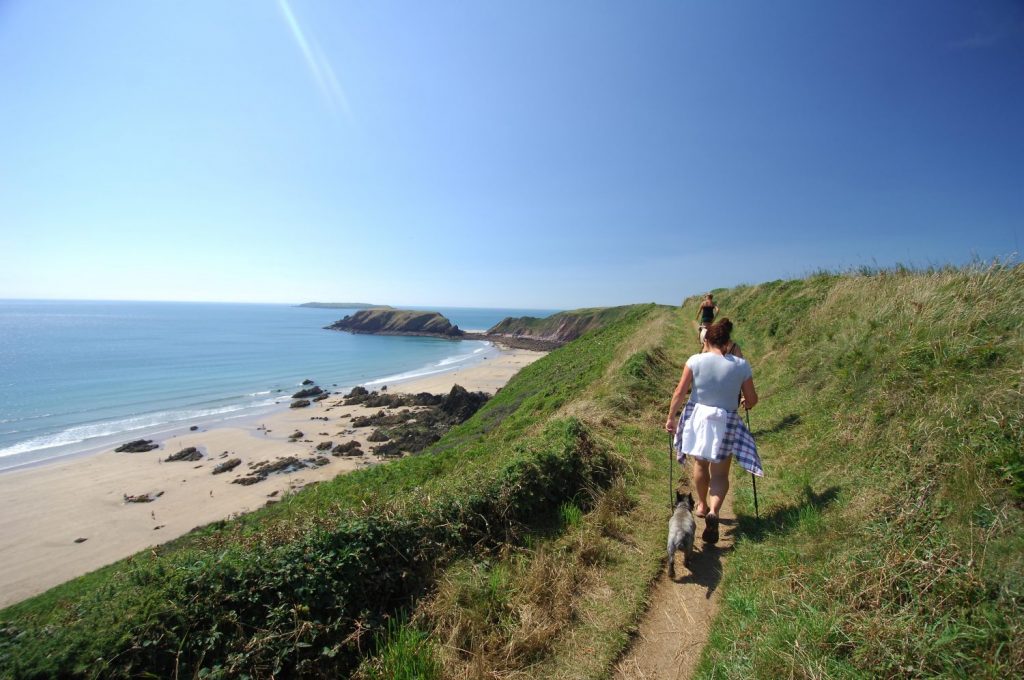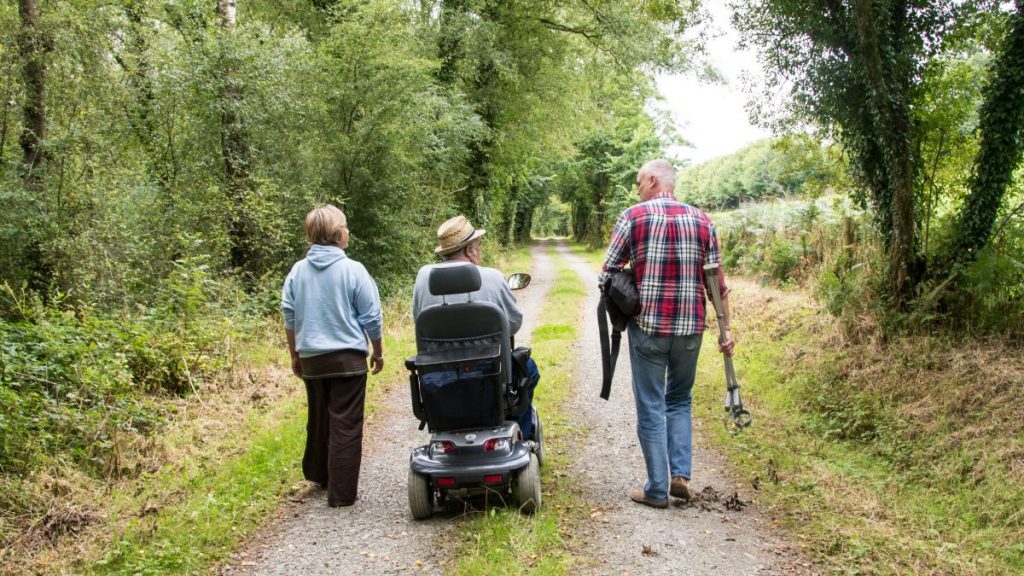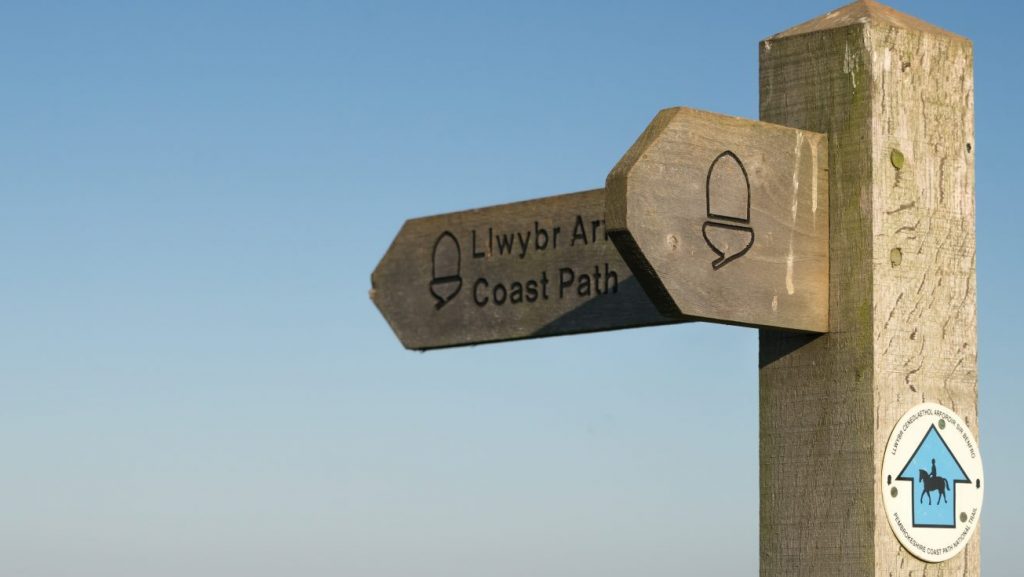DISTANCE/DURATION: 5.8 miles (9.3 km) 3 hours.
PUBLIC TRANSPORT: None.
CHARACTER: Rugged moorland, steep hill walking, wooded slopes, livestock, 0.3 mile (0.5 km) minor road walking.
LOOK OUT FOR: Superb views, pretty wooded slopes and valleys, waterfall and Bedd Morris bronze age standing stone.
Much of the Preseli upland is boggy and the soils are acidic. It is a habitat in which plants like heather, bilberry and ferns thrive.
This is an especially beautiful landscape in late summer when the warm pink of heather in bloom adds colour to breath-taking views.
The Preselis are the highest hills in Pembrokeshire, a ridge of Ordovician shale and mudstone that has been compressed to form weather-resistant slate.
In places there is also igneous dolerite, the famous ‘bluestone’ that forms the inner ring of Stonehenge.
From the broad summit of Mynydd Caregog there are splendid views of Dinas Island and Cardigan Bay. On a very clear day it’s even possible to make out the Wicklow Hills in Ireland on the far western horizon.
A marker on this route is the standing stone known as Bedd Morris or Morris’ Grave, one of 70 standing stones to be found in Pembrokeshire.
The impressive stone stands around two metres (six feet) tall and is thought to date from as long as 4,000 years ago.
Why the stone stands where it does is not known, but it may be to indicate the junction of ancient trackways.
In much more recent times the stone became the centre of local stories. One says that the huge pillar of rock marks the grave of a highwayman called Morris, who is said to have once preyed on travellers crossing the hills.
Sychpant picnic site is owned by the National Park Authority and is a Site of Special Scientific Interest – noted for its High Brown Fritillary butterflies, which enjoy this mosaic of habitats and lichens. Marsh Fritillaries are found further up the site.
The circular route also takes in the steep-sided, wooded Gwaun Valley and skirts the large Penlan forestry plantation.
Planted on moorland in the early 1970s, this spruce wood has been bought by the National Park Authority which is in the process of restoring it to moor and heathland by felling the conifers.
Heather, bilberry and gorse are all recolonising the landscape.
Find this walk
Grid ref: SN046355
COUNTRY CODE!
- Enjoy the countryside and respect its life and work
- Guard against all risk of fire
- Leave gates and property as you find them
- Keep your dogs under close control
- Keep to public paths across farmland
- Take your litter home



